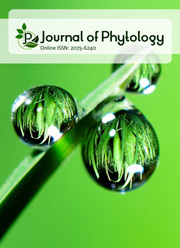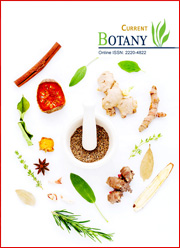Nutritional and antibacterial properties of yeast-fermented herbs for functional poultry feeds
DOI:
https://doi.org/10.25081/jp.2025.v17.9086Keywords:
Antibacterial Properties, Antibiotic Alternatives, Nutritional Composition, Poultry Feed, Yeast-Fermented HerbsAbstract
This study assesses the nutritional and bactericidal characteristics of yeast-fermented herbs as prospective substitutes for antibiotics in animal feed. A fermentation process was conducted on five plants, namely Syzygium polyanthum, Curcuma longa, Andrographis paniculata, Orthosiphon stamineus, and Euphorbia hirta, using Saccharomyces cerevisiae. Analysis conducted after fermentation showed notable alterations in the nutritional composition, with a rise in protein content and a decline in carbohydrate levels. The mineral profiling revealed fluctuations in nutrient contents, particularly significant increases in nitrogen and phosphorus. The antibacterial assays showed that fermented herbs were more effective against bacteria isolates, Escherichia coli, Streptococcus gallolyticus, Staphylococcus aureus, and Aeromonas hydrophila, than non-fermented herbs. The study found that fermented Curcuma longa has a similar antibacterial effectiveness as tetracycline, making it a potential alternative antimicrobial agent in animal feed. The study reveals that yeast-fermented herbs might be a viable and efficient substitute for antibiotics in poultry production, while also being environmentally friendly.
Downloads
References
Bertels, L.-K., Murillo, L. F., & Heinisch, J. J. (2021). The pentose phosphate pathway in yeasts–more than a poor cousin of glycolysis. Biomolecules, 11(5), 725. https://doi.org/10.3390/biom11050725
Buniowska-Olejnik, M., Urbański, J., Mykhalevych, A., Bieganowski, P., Znamirowska-Piotrowska, A., Kačániová, M., & Banach, M. (2023). The influence of curcumin additives on the viability of probiotic bacteria antibacterial activity against pathogenic microorganisms and quality indicators of low-fat yogurt. Frontiers in Nutrition, 10, 1118752. https://doi.org/10.3389/fnut.2023.1118752
Carsanba, E., Pintado, M., & Oliveira, C. (2021). Fermentation strategies for production of pharmaceutical terpenoids in engineered yeast. Pharmaceuticals, 14(4), 295. https://doi.org/10.3390/ph14040295
Debi, M. R., Wichert, B. A., & Liesegang, A. (2019). Method development to reduce the fiber content of wheat bran and rice bran through anaerobic fermentation with rumen liquor for use in poultry feed. Asian-Australasian Journal of Animal Sciences, 32(3), 395-404. https://doi.org/10.5713/ajas.18.0446
Gurjar, V. K., & Pal, D. (2021). Natural compounds extracted from medicinal plants and their immunomodulatory activities. In D. Pal & A. K. Nayak (Ed.), Bioactive Natural Products for Pharmaceutical Applications (Vol. 40, pp.197-261) Cham, Switzerland: Springer. https://doi.org/10.1007/978-3-030-54027-2_6
Hor, P. K., Goswami, D., Ghosh, K., Takó, M., Halder, S. K., & Mondal, K. C. (2022). Preparation of rice fermented food using root of Asparagus racemosus as herbal starter and assessment of its nutrient profile. Systems Microbiology and Biomanufacturing, 2, 147-156. https://doi.org/10.1007/s43393-021-00046-8
Hudzicki, J. (2009). Kirby-Bauer Disk Diffusion Susceptibility Test Protocol. American Society for Microbiology.
Jyotirmayee, B., & Mahalik, G. (2022). A review on selected pharmacological activities of Curcuma longa L. International Journal of Food Properties, 25(1), 1377-1398. https://doi.org/10.1080/10942912.2022.2082464
Liu, L., Li, Q., Yang, Y., & Guo, A. (2021). Biological function of short-chain fatty acids and its regulation on intestinal health of poultry. Frontiers in Veterinary Science, 8, 736739. https://doi.org/10.3389/fvets.2021.736739
Mapelli-Brahm, P., Barba, F. J., Remize, F., Garcia, C., Fessard, A., Khaneghah, A. M., Sant'Ana, A. S., Lorenzo, J. M., Montesano, D., & Meléndez-Martínez, A. J. (2020). The impact of fermentation processes on the production, retention, and bioavailability of carotenoids: An overview. Trends in Food Science & Technology, 99, 389-401. https://doi.org/10.1016/j.tifs.2020.03.013
Martina, E. C., Oludayo, A. K., Linda, N. C., Chinasa, O. P., Ambrose, O. C., & Muoneme, O. T. (2020). Effect of the incorporation of graded levels of turmeric (Curcuma longa) on different qualities of stirred yoghurt. African Journal of Food Science, 14(3), 71-85. https://doi.org/10.5897/AJFS2020.1903
Olagunju, L. K., Isikhuemhen, O. S., Dele, P. A., Anike, F. N., Ike, K. A., Shaw, Y., Brice, R. M., Orimaye, O. E., Wuaku, M., Essick, B. G., Holt, N., Udombang, N. S., Enemudo, J. O., Subedi, K., & Anele, U. Y. (2023). Effects of the Incubation Period of Pleurotus ostreatus on the Chemical Composition and Nutrient Availability of Solid-State-Fermented Corn Stover. Animals, 13(16), 2587. https://doi.org/10.3390/ani13162587
Pliego, A. B., Tavakoli, M., Khusro, A., Seidavi, A., Elghandour, M. M. M. Y., Salem, A. Z. M., Márquez-Molina, O., & Rivas-Caceres, R. R. (2022). Beneficial and adverse effects of medicinal plants as feed supplements in poultry nutrition: A review. Animal Biotechnology, 33(2), 369-391. https://doi.org/10.1080/10495398.2020.1798973
Saha, M., & Sarkar, A. (2021). Review on multiple facets of drug resistance: a rising challenge in the 21st century. Journal of Xenobiotics, 11(4), 197-214. https://doi.org/10.3390/jox11040013
Santos, M. F. da S., Freitas, C. S., Verissimo da Costa, G. C., Pereira, P. R., & Paschoalin, V. M. F. (2022). Identification of antibacterial peptide candidates encrypted in stress-related and metabolic Saccharomyces cerevisiae proteins. Pharmaceuticals, 15(2), 163. https://doi.org/10.3390/ph15020163
Selaledi, L. A., Hassan, Z. M., Manyelo, T. G., & Mabelebele, M. (2020). The current status of the alternative use to antibiotics in poultry production: An African perspective. Antibiotics, 9(9), 594. https://doi.org/10.3390/antibiotics9090594
Singh, K. S., Anand, S., Dholpuria, S., Sharma, J. K., Blankenfeldt, W., & Shouche, Y. (2021). Antimicrobial resistance dynamics and the one-health strategy: a review. Environmental Chemistry Letters, 19(4), 2995-3007. https://doi.org/10.1007/s10311-021-01238-3
Syawal, H., Kurniawan, R., Effendi, I., & Austin, B. (2021). Fermented medicinal herbs improve the hematological and physiological profile of Striped catfish (Pangasionodon hypophthalmus). F1000Research 2021, 10, 466. https://doi.org/10.12688/f1000research.52640.1
Yaqoob, M. U., Abd El-Hack, M. E., Hassan, F., El-Saadony, M. T., Khafaga, A. F., Batiha, G. E., Yehia, N., Elnesr, S. S., Alagawany, M., El-Tarabily, K. A., & Wang, M. (2021). The potential mechanistic insights and future implications for the effect of prebiotics on poultry performance, gut microbiome and intestinal morphology. Poultry Science, 100(7), 101143. https://doi.org/10.1016/j.psj.2021.101143
Yong, K. W., Yong, K. C., Tang, Y. Q., & Lim, C. T. (2019). Evaluation of curcumin content and antioxidant activities of turmeric rhizome fermented with Lactobacillus species. Journal of Food Science and Technology, 56(3), 1223-1232.
Zhou, X., Li, S., Jiang, Y., Deng, J., Yang, C., Kang, L., Zhang, H., & Chen, X. (2023). Use of fermented Chinese medicine residues as a feed additive and effects on growth performance, meat quality and intestinal health of broilers. Frontiers in Veterinary Science, 10, 1157935. https://doi.org/10.3389/fvets.2023.1157935
Published
How to Cite
Issue
Section
Copyright (c) 2025 Masnindah Malahubban, Juriah Kamaludeen, Suhaili Mustafa, Muhamad Hakim Mohd Ali Hanafiah, Maria Eva Barudi, Fitri Ab Aziz Zakry

This work is licensed under a Creative Commons Attribution 4.0 International License.





 .
.